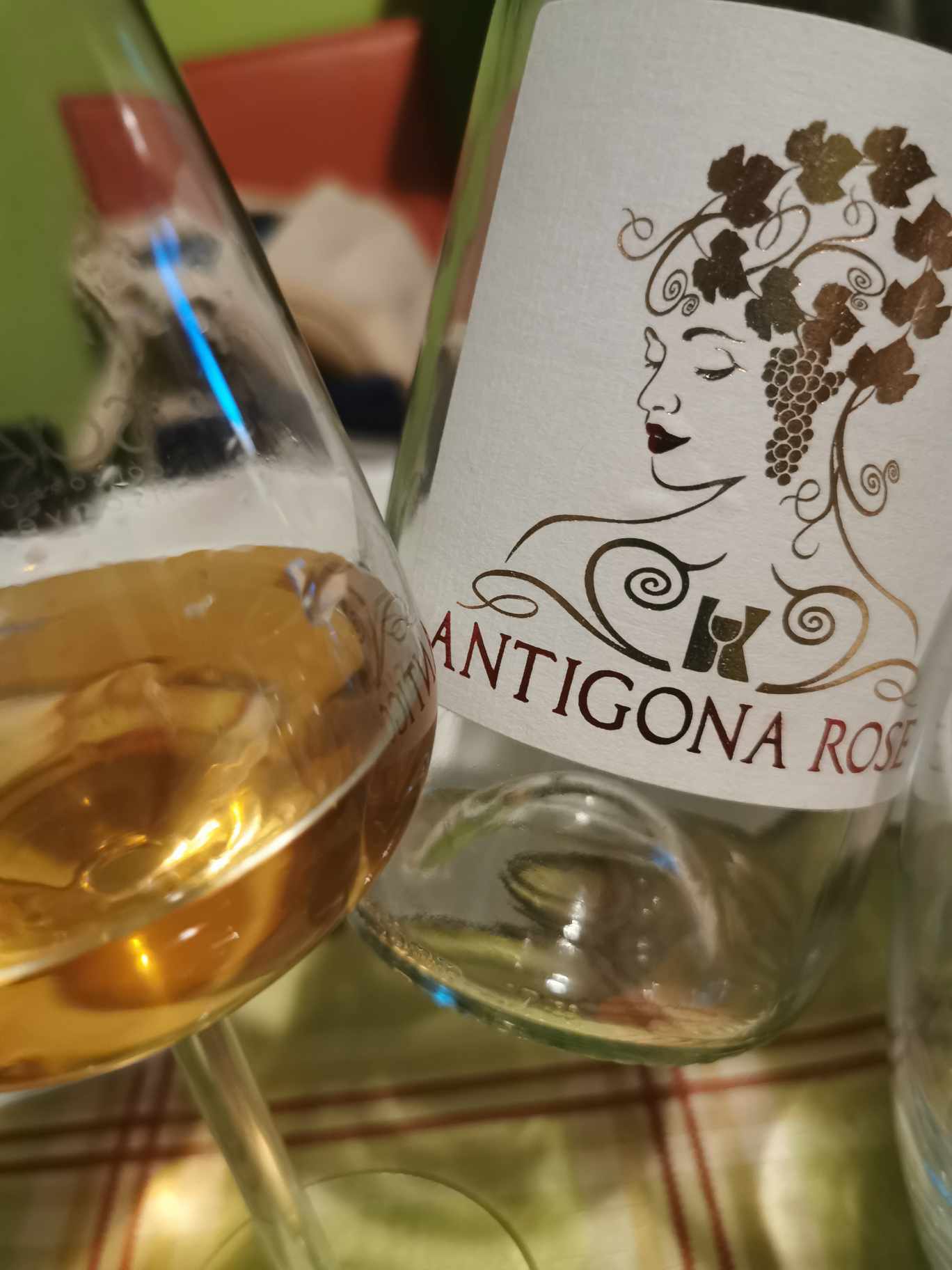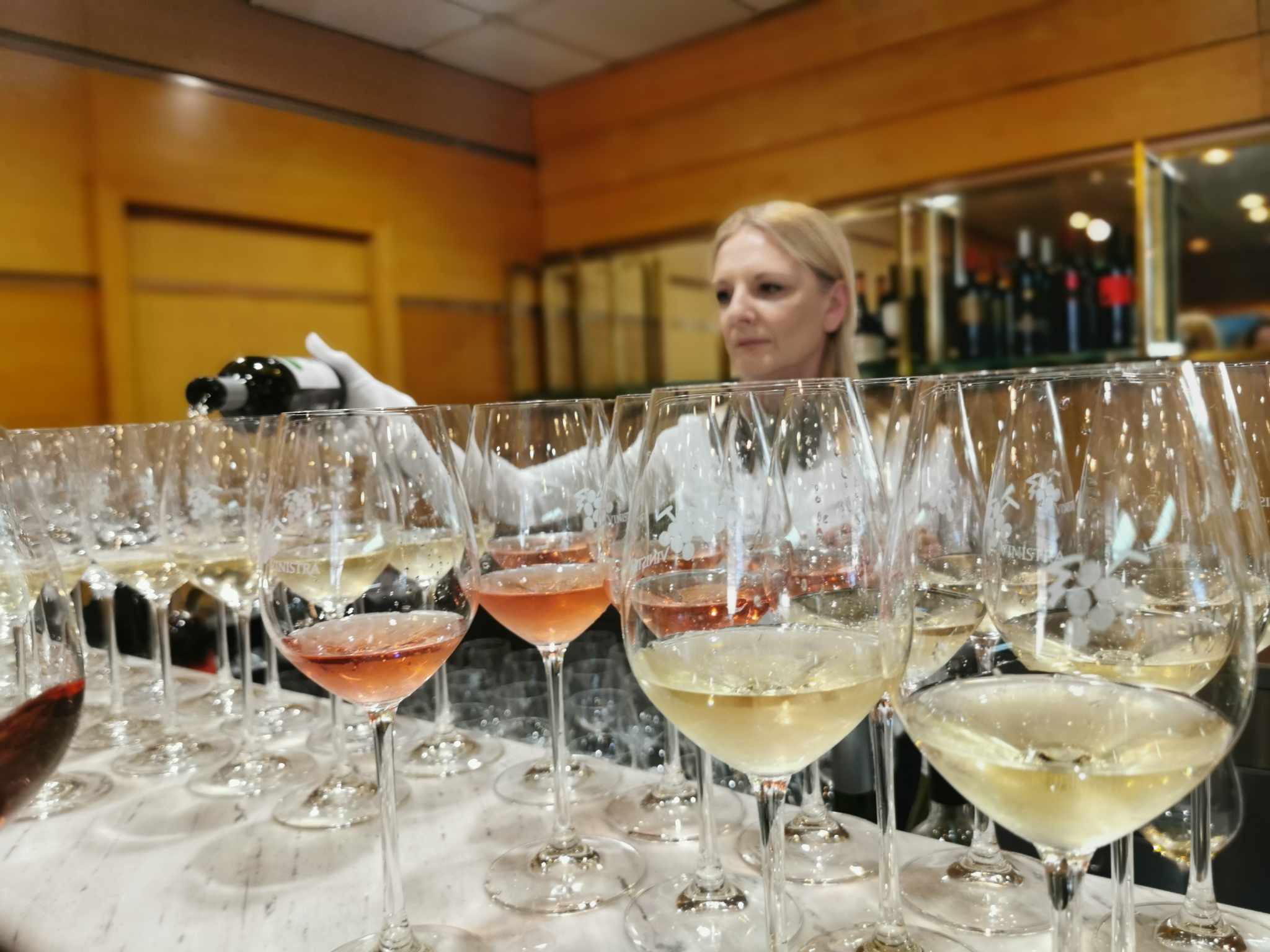News
News / 07/05/2014 / 1816
While the car was gliding along the highway through vast Vojvodina plains, I understood the breadth "of endless blue circle and stars in it" that Serbian writer Miloš Crnjanski could never forget ... How could he? Vast plains as far as the eye can see, the blue sky above, the scorching hot sunshine and only a few trees to provide shade ... And it is the Sun that gives life to the grapevine and grapes on the Subotica-Horgoš sands. And wines of North Serbia are made from those grapes.
Of course, when you mention modern winemaking northern Serbia, Zvonko Bogdan Winery first comes to mind. Since the winery opened its doors to numerous tourists who come to the Lake of Palić to rest and learn more about local wines, it has become a must-see in the eno-gastronomic map of northern Serbia. Even from a distance, the fascinating roof of the winery whose beauty and grace tear the blue skies apart, is visible ... Through the open gate, we enter the vineyard of 17h which surrounds the winery from all sides. Zvonko Bogdan Winery makes wines exclusively from their own grapes, so in addition to the vineyards near the winery, they own another 39 hectares of vineyards on the shores of Ludaš Lake.
My companions on this wine trip were my friends and fellow sommeliers from USV (Association of Sommeliers of Vojvodina): Zoki, Robi, Cornelia and our hosts from Kanjiža (Magyarkanizsa) Anita and Tamas. In the winery, we were greeted by Tatjana Altuhov and she guided us through all the stages of production at Zvonko Bogdan Winery.
Although we are well acquainted with wines from Zvonko Bogdan Winery, we eagerly awaited the wine tasting right at the spot where these wines were produced ... In order to reconfirm their quality, which has been proven at this year's Decanter, where Pinot Blanc 2013 won the bronze medal, whilst Sauvignon Blanc 2013 and Cuvee No. 1 2011 were commended.
Nowadays, in Serbia, everyone may notice rising popularity of rosé wines. This is not a Serbian feature, consumption of rosé wines is on the rise globally. If you look at contemporary Serbian wine scene, you can distinguish between two types of rosé wines. The first group is represented by dry rosé wines, which also include our traditional rosé made from Prokupac grapes. This type of wine is more demanding, requires more educated wine consumers who will assess its quality by comparing it with rosés from Tavel (South France). The second group is much larger, and it comprises offdry rosé wines. These are the wines that sell well in shops and spur the word of mouth in Serbia. The wine culture in Serbia is still at such a level that the average consumer and wine-admirer enjoys this rosé, rather lovable, with residual sugar that makes it drinkable and enjoyable. And certainly the leaders of the Serbian market in this segment are rosé wines from Zvonko Bogdan Winery and Temet Winery.
In the process of rosé production, grape juice is allowed to stay in contact with skins for just a few hours. Such practice leads to a very nice pink colour of wine, but the wine usually lacks certain varietal characteristics of the grapes, as many components that affect the varietal character of the wine remained in the skin. Therefore, it may happen that rosé contains only hints of taste and fullness because the extraction phase was not long enough. In order to improve the final result and give wine more body and extracts, winemakers leave some residual sugar. Don't get me wrong, I am not criticizing those who make such wines or even greater number of those who simply enjoy and drink them. These wines occupy a very important segment of the wine market and have their important role in the education of future wine lovers. The best examples of these wines are appreciated because despite residual sugar, they maintain fruitiness, complexity and depth. That's why Zvonko Bogdan rosé gained such widespread popularity.
However, Zvonko Bogdan Winery has decided to say something serious about rosé wine ... During our visit to the winery, we got a special privilege to taste new Zvonko Bogdan rosé sec, the limited dry version. This rosé seems to me a desire to make it clear to all wine experts that apart from having created a popular wine that quickly won affection of general public, they can also produce wine from the same grape varieties (Merlot, Blaufrankisch, Cabernet Franc) that will meet expectations of more demanding wine-flies. Certainly the best Serbian rosé from the year 2013 that I have had an opportunity to taste so far. And limited quantity - only 2400 bottles. The mouth is dominated by persistent aroma of cherry, pomegranate with discreet spicy notes that complement greatly and round the impression in the mouth. The wine is characterized by good body and a very long finish. I just hope that the price will be appropriately suited to Serbian wallets.
And after the famous Abraham's perkelt (this flagship dish from North Serbia has its roots in Hungarian tradition (Pörkölt), and I would simply describe it as a drier version of goulash, because the meat seems fried rather than cooked), we continued our journey along the Tisa river… Just to make it clear, the best perkelt in Serbia is said to be the one served in restaurant Abraham at the Lake of Palić, and the dish recipe has remained unchanged since 1939 ( www.abraham.rs ). We had an opportunity to check its reputation… The road led us to Kanjiža (in Hungarian also known as: Magyarkanizsa).
If one mentions the town of Kanjiža, most people think first about tiles and ceramics that have been made for centuries from Kanjiža clay. These clay deposits abound alongside the Tisa river. Kanjiža is also well-known for "flowering of the Tisa River," ie. natural phenomenon where millions of insects (lat. Palingenia longicauda) hatch in mid-June, making a sort of cloud over the water surface. Within a few hours of hovering above the water, they perform their wedding dance and die, whereas the females lay eggs again in the mud, and thus prolong the survival of this unusual species.
However, we were coming to Kanjiža for quite an unusual reason. You will be probably surprised to hear that there is a winery in the very centre of Kanjiža. I'll be free to define Nagy-Sagmeister Winery as a Serbian version of "the garagistes" from California (movement designed by small wineries in Bordeaux that were created in modest conditions, often in garages, where they insisted on producing top quality wines in limited quantities as a kind of counter-reaction to the traditional style of wine from Bordeaux. The movement quickly spread from Bordeaux to California, Chile and other corners of the world, and today garage wineries can also be found in London). Well, Kanjiža also has its "garage winemakers" - Erne Sagmeister and Jozsef Nagy.
We were welcomed in the winery by Erne and within just a few minutes of conversation with him, it seemed to me that the energy with which he spreads his wine philosophy could even make the lazy Tisa river to flow upstream. The philosophy is clear: respect local grape varieties and let the wine express characteristics of the area (the so-called terroir) and natural varietal features. Sagmeister is a Bavarian surname, and even Erne's grandfather cultivated grapes and made wine, so ever since early childhood, Erne learnt from his father and grandfather how to make wine and cultivate vineyards. Six years ago, together with his friend Jozsef Nagy, he bought land in Fruška Gora and planted vineyards. This winery owns approximately 5 hectares of vineyards in Fruška Gora, three plots: Kamen, Djevuš and Orljak, near the villages of Irig and Neradin. In addition, they have half a hectare of old vineyards in the vicinity of Kanjiža. The following varieties are cultivated: Furmint (Moslavac), Kadarka, Pinot Noir. Erne particularly emphasizes one of the theories about the Balkans' origins of Furmint which identifies Fruška Gora and Sirmium (today's Sremska Mitrovica) as the birth place of Furmint (which could be realistic given that the theory of Italian origin of this variety already proved to be false).
Kövidinka 2012 – Nagy-Sagmeister Winery – This wine comes from an old vineyard located on a layer of sandy-loess soil near the lake of Ludaš. Light wine, low acidity, medium body. The nose is dominated by aromas of elderberry flowers, pear, lime tea. I would gladly share this wine with friends by the Tisa river.
Furmint 2013 – Nagy-Sagmeister Winery– 500 litre barrel sample. Malolactics done, presence of suphur still detectable. Grapes originate from Orljak plot in the vicinity of Grgeteg Monastery. Important to say, this part of Fruška Gora is quite rocky, with stone whose structure resembles the stone used for construction of Petrovaradin Fortress in Novi Sad. In this vineyard, the yield per plant never exceeds 600gr.
Furmint 2012 – Nagy-Sagmeister Winery - A refreshing dry wine, with intense rich aromas on the nose, dominated by quince. Alcohol is also detectable on the nose, and a mere look at the label reveals 14.5%. Vibrant acidity adds freshness, medium-bodied wine. Grapes originate from a vineyard near the village of Neradin, in the vicinity of the national park.
Kadarka 2012 – Nagy-Sagmeister Winery - Grapes originate from Djevuš plot, in the vicinity of Hopovo Monastery. An excellent "textbook" example of Kadarka wine in terms of style. Plenty of aromas of caramelized sugar, cherry, coffee, elegant spicy notes skilfully wrapped into wood. A pleasant wine, well balanced. It proves that microlocations on Fruška Gora can produce exquisite wines with distinct varietal features of Kadarka. An additional reason to promote resurrection of Kadarka in vineyards of Fruška Gora where it used to be a dominant black variety in the past.
Pinot Noir 2012 – Nagy-Sagmeister Winery - The year 2012 was a tough year for Pinot Noir. The winemaker struggled to restrain alcohol levels. Grapes originate from still young vineyards. This wine is not the elegant fruity Pinot that you got used to. It has tannins, ripe and plentiful, which give this wine certain masculine character… Drinkable, with vibrant acidity which are acoompanied with tannins, so ageing potential looks promising. Aromas originating from used barrique barrels give a nice wrapping.
Certainly, Erne has opened up a whole new world ... He is the only winemaker in Fruška Gora who explores possibilities of Furmint there and he is certainly heading in the right direction. And his task is to bring this variety closer to Serbian wine lovers, since it is, unfortunately, still insufficiently known ... And it should be mentioned that even Jancis Robinson ranked this variety among the 4 most prestigious white grapes in the world.

Tomislav Ivanović
Awarded wine writer, wine critic and contributor to selected wine magazines. WSET3-certified author and editor-in-chief of www.vinopedia.rs. Member of Vojvodina Sommelier Association. Juror in national and international wine competitions. Lecturing about wines of Serbia and the Balkans. Local partner of Wine Mosaic organization. Co-founder of International Prokupac Day.

Pročitajte i druge članke iz ove rubrike:


VINOPEDIA TOP 10 2024
PROČITAJ VIŠE


GIUAANI - VINSKI TURIZAM NA GRUZIJSKI NAČIN
PROČITAJ VIŠE


SPASIMO STARE VINOGRADE SRBIJE
PROČITAJ VIŠE


NAŠLI SMO ANTIGONU IZ ORAHOVCA
PROČITAJ VIŠE


SRPSKO VINO KOŠTA 100 EUR - I ŠTA ĆEMO SAD?
PROČITAJ VIŠE
Winner MILLESIMA BLOG AWARD 2016

Pobednik MILLESIMA BLOG AWARD 2016
VINO & FINO wine personality of the year 2016

VINO & FINO vinska ličnost godine 2016